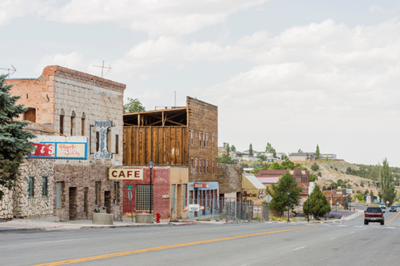
At various times in our nation’s history, cooperative enterprise has been at the center of innovative federal policies designed to empower communities to meet their own needs in a way that other business models could not or would not. Many of the conditions that inspired these approaches may be familiar to us today: family farmers struggling against corporate consolidation, a widening gap in wealth and opportunity, working people trying to stay out of debt while accessing higher education and a better life, and communities excluded from some of the basic advantages of advances in technology.
These government programs were built on the foundation of successful experiments of cooperatives to date both within the U.S. and in other countries, and were rooted in values of democracy, self-responsibility and self-help. Federal support has focused primarily on legislation that would reinforce the unique nature of co-ops as user-owner, user-governed and user-benefiting business; clear obstacles to cooperative business development; and open the way for cooperative entrepreneurs. Where government support was necessary, the long-term goal was for co-ops to become self-governing, self-sustaining and accountable to the communities that they served over time. In this sense, they appealed to people across the political spectrum.
For example, in 1922 Congress enacted the Capper-Volsted Act—often referred to as the “Co-operative Bill of Rights”—opening the way for the growth of agricultural co-ops. Recognizing the role of cooperatives in enabling family farmers to compete and negotiate with much larger corporations, the federal government soon moved beyond basic provisions enabling their formation to providing formal technical and financial support. With the passage of the Cooperative Marketing Act in 1926, the U.S. Department of Agriculture became directly involved in cooperative development. Today, a majority of America’s 2 million farmers are co-op members with familiar co-ops active in our region including Deep Root Organic Co-op, Organic Valley, Pioneer Valley Growers Association, and Cabot Creamery Cooperative (part of Agri-Mark), which is celebrating its centennial this year.
Similarly, in 1933 the Farm Credit Act funded the establishment of financial co-ops for farmers and rural communities, and the Rural Electrification Act of 1936 provided isolated communities unable to access electricity and other utilities with federal loans to build power infrastructure themselves. Structured as community-based co-ops, these businesses continue to provide electric services to the majority of the American land mass. Examples in the U.S. Northeast include the Vermont Electric Co-op, Washington Electric Co-op (VT), the New Hampshire Electric Co-op, and the Delaware and Otsego Electric Co-ops in New York State.
Other examples of government support for cooperative enterprise include the Federal Credit Union Act (1936), which enabled working people to charter credit unions under federal law, opening access to affordable credit and other financial services, and rooting capital in local communities. (Today, 115 million Americans are credit union members.) In the 1950s and ’60s, Federal Housing Acts sought to address issues of affordable housing thought the development of housing co-ops. And in 1978, the National Cooperative Bank was chartered by Congress to provide financial services to co-ops and the members.
To build on this legacy, earlier this summer, with the 2020 Presidential Elections beginning to heat up, NCBA CLUSA launched its #CoopsFor2020 Campaign to help raise awareness of cooperatives as powerful, effective tools for building more stable, sustainable businesses and communities—from addressing rural internet connectivity and clean energy to affordable housing, financial security and healthy food access.
The campaign invites people to send a “Letter to the Editor” to their local newspaper or other publications and provides a customizable template, along with sample social media posts to share the message of the #CoopsFor2020 Campaign. It’s a great opportunity to share what your local co-ops and credit unions mean to you and your community, raise awareness about the cooperative difference, and ensure that cooperatives are part of the debate.
And the campaign is already working. New York Senator and Presidential Candidate Kirsten Gillibrand released her plan for a “National Partnership for a Prosperous Rural America,” with cooperatives playing a central role. The plan proposes to fully fund the Rural Cooperative Development Grant (RCDG) Program at $40 million per year and create a White House Council on a Cooperative Economy to ensure all federal programs are oriented to supporting cooperatives.
With Co-op Month coming up in October, cooperatives and credit unions across the U.S. will be celebrating how they are “For the Community” and “By the Community.” What better time to make sure that our candidates know that co-ops have been central to our country’s progress, and are powerful tools for building a better future for everyone.
—Erbin Crowell is Executive Director of the Neighboring Food Co-op Association and serves as Chair of the Board of Directors of NCBA CLUSA. He received his Master of Management: Co-operatives & Credit Unions from Saint Mary’s University in Nova Scotia and is an adjunct lecturer with the Department of Economics at UMass Amherst, where he teaches courses on the cooperative movement.


